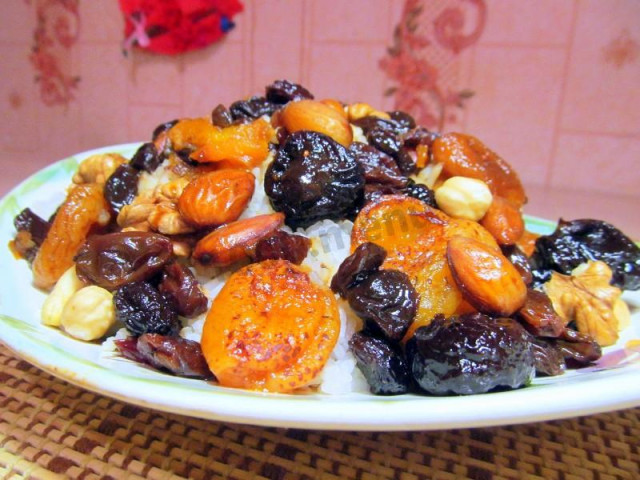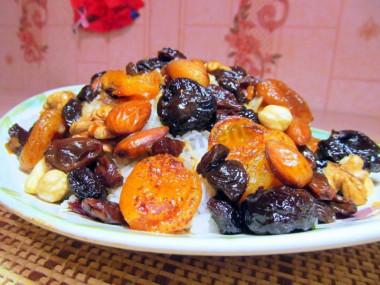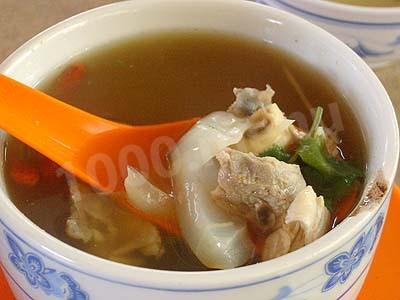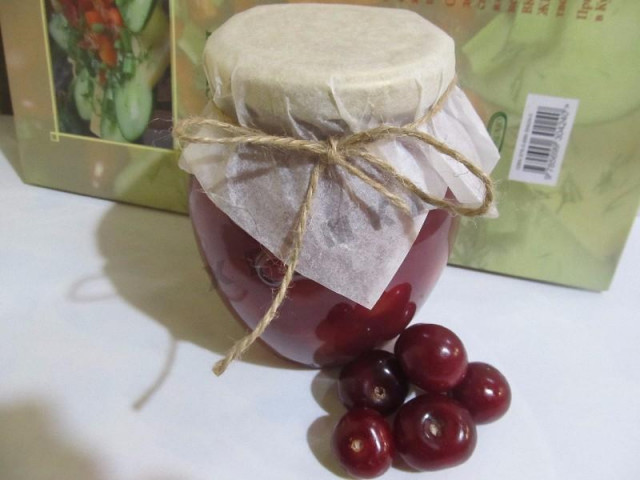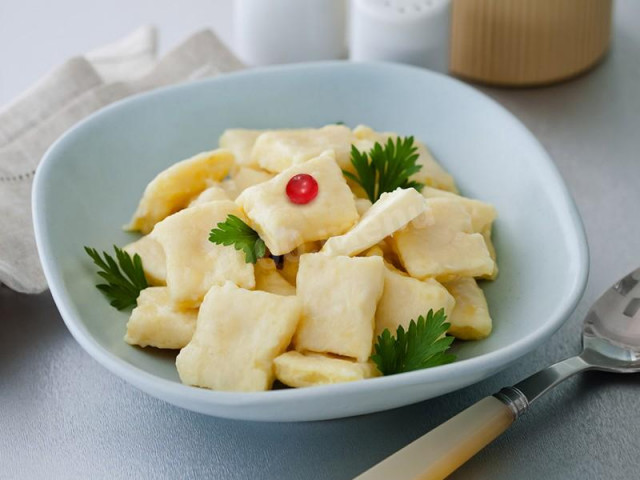Composition / ingredients
Step-by-step cooking
Step 1:
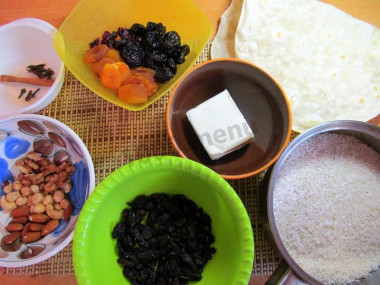
Necessary Ingredients
Step 2:
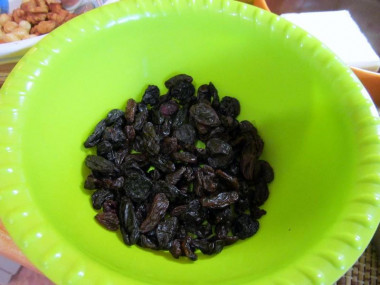
Raisins are a mandatory component, because they have a symbolic meaning
Step 3:
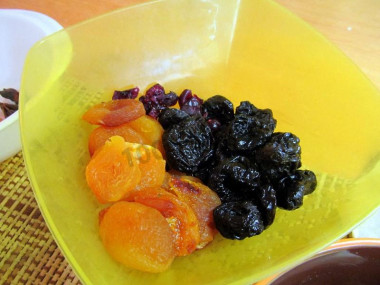
Dried fruits can be varied, it all depends on your desire - you can take dates, dried figs, cranberries, etc.
Step 4:
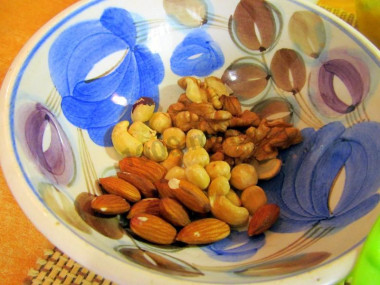
Almonds in nuts are mandatory, the rest of the nuts are taken again at will and used for decoration, you can even without them, it will still be very tasty
Step 5:
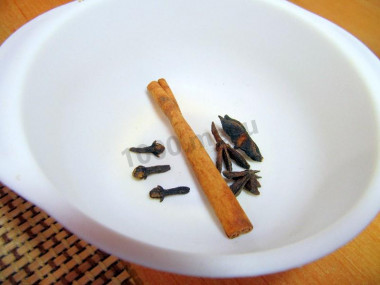
I added spices on my own, they were not used in the original recipe. But it seems to me that cinnamon, cloves and star anise reveal the aroma of dried fruits even more
Step 6:
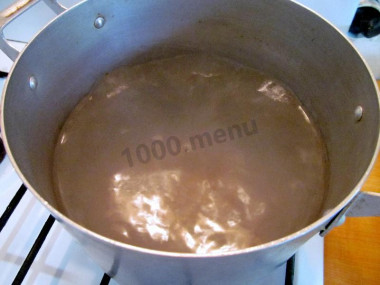
Put the water on the fire and add 1 teaspoon of salt. We take 3 times more water than rice. It took me 2 250 ml mugs of rice, so I take 6 such mugs of water
Step 7:
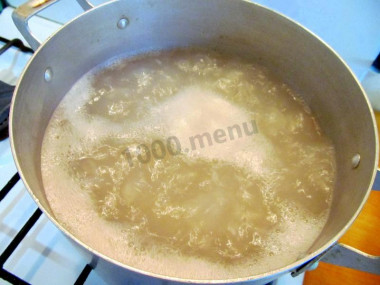
When the water boils, we put the washed rice to sleep. Cook for 10 minutes until half cooked
Step 8:
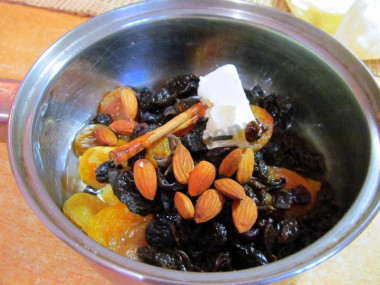
Put raisins, dried fruits, almonds, a piece of butter in a saucepan, add half a cup of water and put it on low heat to languish for 20-30 minutes. Stir occasionally and, if necessary, add a little more water so that the dried fruits do not burn
Step 9:
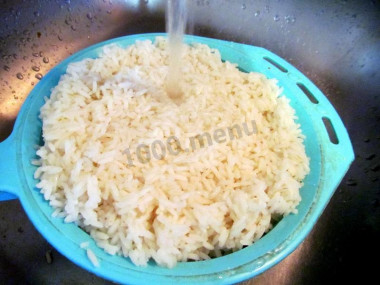
After 10 minutes, the rice is cooked, as the Italians would say, to the state of al dente. We throw it into a colander and rinse it with cold water - this is done so that the rice remains crumbly
Step 10:
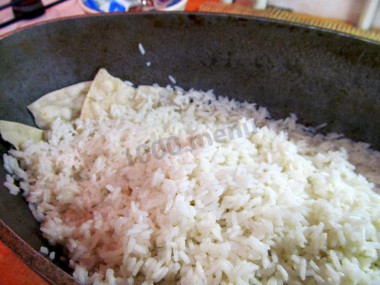
Lubricate the bottom of the cauldron with butter and lay the pita bread on the bottom so that the rice does not burn later
Step 11:
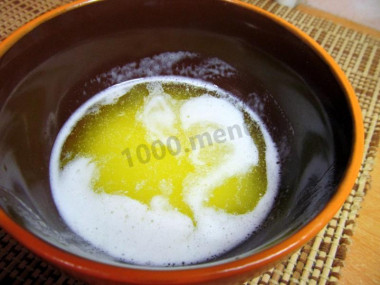
The remaining butter should be melted in the microwave or in a water bath. The original recipe uses ghee
Step 12:
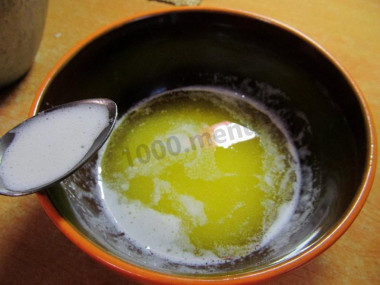
Remove the resulting white foam, as in the preparation of real ghee
Step 13:
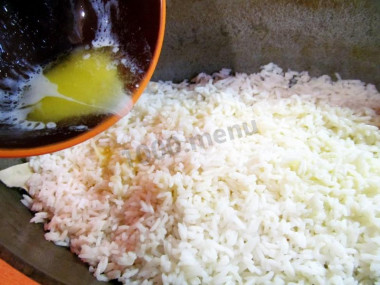
Pour melted butter on rice
Step 14:
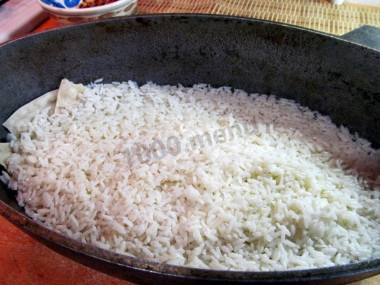
Leveling up
Step 15:
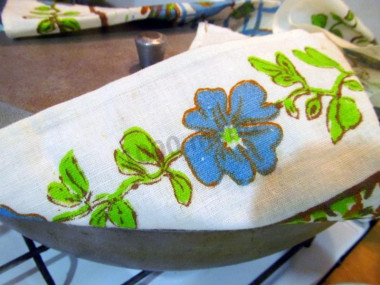
Cover with a lid wrapped in a clean towel. This is done so that the resulting condensate does not spoil the rice
Step 16:
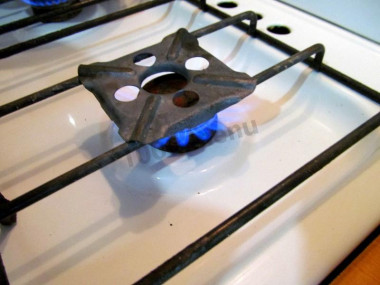
We put the cauldron on the flame divider on the weakest fire. We stand for 1 hour. The rice will warm up and come to readiness
Step 17:
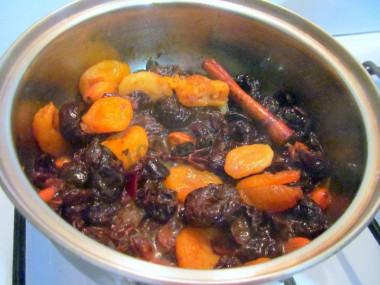
When the dried fruits are ready, turn off the fire and wait until the rice is ready
Step 18:
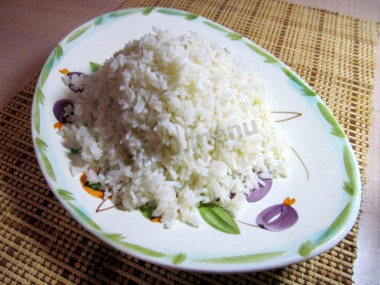
And after an hour we put the rice on a platter with a slide. The photo shows how crumbly it turned out - rice to rice
Step 19:
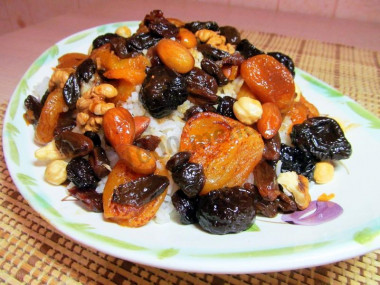
Spread steamed dried fruits with raisins and almonds on top. Decorate with the remaining nuts. Our Easter pilaf is ready! Enjoy your meal!
As you have already understood, it will not be difficult to cook this pilaf, and the result will simply overwhelm you - fragrant, crumbly, elegant... Just a fairy tale!
Caloric content of the products possible in the composition of the dish
- Raw wild rice - 353 kcal/100g
- Brown raw rice - 360 kcal/100g
- Boiled brown rice - 119 kcal/100g
- White fortified raw rice - 363 kcal/100g
- White fortified boiled rice - 109 kcal/100g
- White rice, steamed, with long grains raw - 369 kcal/100g
- Steamed white rice, boiled with long grains - 106 kcal/100g
- Instant dry rice - 374 kcal/100g
- Instant rice, ready to eat - 109 kcal/100g
- Fig - 344 kcal/100g
- Walnuts - 650 kcal/100g
- Black Walnut English Walnut - 628 kcal/100g
- Black Persian Walnut - 651 kcal/100g
- Walnut oil - 925 kcal/100g
- Hazelnuts - 670 kcal/100g
- Almonds nuts - 609 kcal/100g
- Carnation - 323 kcal/100g
- Butter 82% - 734 kcal/100g
- Amateur unsalted butter - 709 kcal/100g
- Unsalted peasant butter - 661 kcal/100g
- Peasant salted butter - 652 kcal/100g
- Melted butter - 869 kcal/100g
- Dried apricots - 215 kcal/100g
- Uryuk - 290 kcal/100g
- Dried peaches - 254 kcal/100g
- Raisins - 280 kcal/100g
- Kishmish - 279 kcal/100g
- Prunes - 227 kcal/100g
- Armenian lavash - 236 kcal/100g
- Lavash - 277 kcal/100g
- Cashews - 561 kcal/100g
- Salt - 0 kcal/100g
- Water - 0 kcal/100g
- Star Anise - 337 kcal/100g
- Cinnamon stick - 261 kcal/100g

